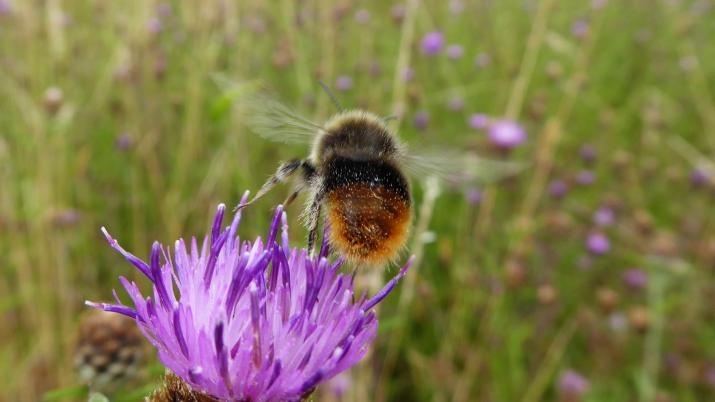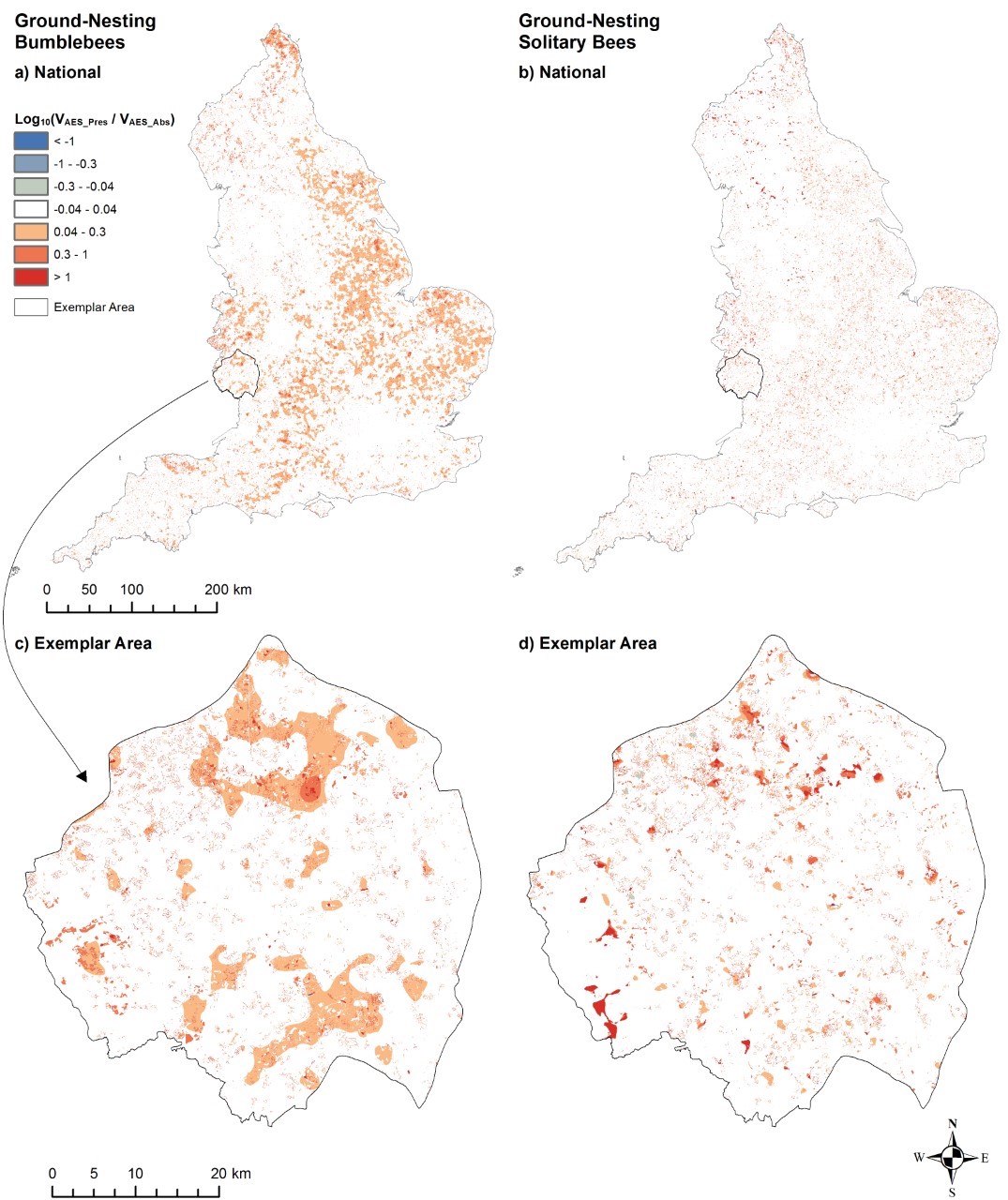
Mike Image is a PhD student in the School of Agriculture, Policy and Development at the University of Reading
Agri-environment schemes, wild bees, and crop pollination
Agri-environment schemes are programmes where farmers enter contractual agreements to manage land for environmental objectives. Some scheme interventions are situated within agricultural systems (e.g., field margins and hedgerow management) while others target larger areas of semi-natural habitat (e.g., grassland, wetland). Wild bees (bumblebees and solitary bees) are important pollinators of oilseed rape, field beans, orchard fruit and strawberries, which are England’s main pollinator-dependent crops. Many interventions increase wild bee populations by enhancing nesting and floral resources in the landscape, but schemes consist of multiple interventions with varying resource quality, uptake quantity and location. Wild bees have limited foraging ranges (typically <1 km) and need resources throughout their lifecycle for population growth. Understanding how entire schemes affect crop pollination requires a modelling approach that considers crop and intervention relative locations, resource quality, foraging behaviour, and population processes.
Predicting the impact of agri-environment scheme participation on crop pollination service
We used a validated spatio-temporal process-based model (poll4pop) to simulate wild bee populations and pollination services across England during 2016, both with and without the agri-environment interventions implemented in the landscape. We calculated the change in abundance for four groups (‘guilds’) of bee (ground-nesting bumblebees, tree-nesting bumblebees, ground-nesting solitary bees, and cavity-nesting solitary bees) and the change in their visitation rates to oilseed rape, field beans, orchard fruit and strawberries.
Highlights of the results
English agri-environment schemes significantly increased populations of ground-nesting bumblebees and ground-nesting solitary bees nationally. For ground-nesting bumblebees nest number increased by 4.6% (± 2.0%), summer-active workers increased by 8.2% (± 3.3%) and new queens by 10.4% (± 3.9%). We predicted no significant increases in visitation to any crop at national level but noted localised late spring bumblebee visitation increase (see Figure), with 46.4% of oilseed rape and 36.1% of field bean cropping areas experiencing statistically significant service enhancement.

Impact of Agri-environment schemes on floral visitation rate for late spring 2016 nationally (a, b) and within an exemplar area (c, d) in western England. Crops located in orange/red areas receive greater visitation.
Implications
England’s agri-environment schemes support ground-nesting bumblebees and their pollination services to oilseed rape and field beans, but not consistently across the landscape. Low scheme participation in more intensive arable areas may explain this inconsistency and absence of effect on orchard fruit and strawberries. Our results also suggest that schemes enhance nesting resources less than floral resources, limiting pollination enhancement of early-flowering crops (particularly orchards) which is dependent on queens and first-generation workers. Significant population increases were not predicted for other guilds because commonly adopted interventions mainly benefit ground-nesters. We recommend future schemes enhance nesting resource provision alongside existing floral resource provision (including interventions that support a wider bee diversity) and promote greater uptake in intensive arable areas.
Further information
The full study can be found at: Image, M., Gardner, E., … & Breeze, T. (2022) Does agri-environment scheme participation in England increase pollinator populations and crop pollination services? Agriculture, Ecosystems and Environment. 325, 107755 https://doi.org/10.1016/j.agee.2021.107755